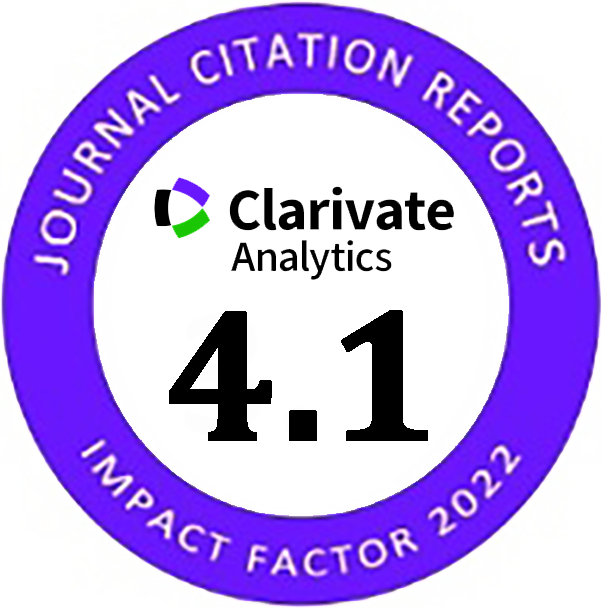Prediction of Fiber Reinforced Concrete Strength Properties by Micromechanics Method
Abstract
High strength steel fiber reinforced concrete (HSSFRC) was prepared with the help of steel fiber. 0.5%, 1.0%, and 1.5% steel fiber by volume of concrete specimen was used in concrete for present investigation. Compressive strength test and flexural strength test were conducted on cubical and prismatic specimens respectively.
The main objective of the research work is to validate the experimental out comes by a numerical technique such as micromechanics approach. A high strength steel fiber reinforced concrete whose compressive strength is greater than 60 N/mm2 was prepared and tested on concrete testing machine. Flexural strength test was conducted on universal testing machine to evaluate the bending properties of concrete. It was observed that with increase in the percentage of steel fiber volume the compressive strength and flexural strength also increases. However the workability of concrete declines and concrete is no longer in working condition. Micromechanics technique helps to predict the strength properties which save time required for casting and such technique was found to be beneficial.
Keywords
References
Ma, Dongpeng, Yiping Liu, Nanli Zhang, Zhenyu Jiang, Liqun Tang, and Huifeng Xi. “Micromechanical Modeling of Flexural Strength for Epoxy Polymer Concrete.” International Journal of Applied Mechanics 09, no. 08 (December 2017): 1750117. doi:10.1142/s1758825117501174.
Enhua Yang and Victor C Li., “A micromechanical model for fiber cement optimization and component tailoring,” 10th International Inorganic Bonded Fiber Composites conference (October 15-18, 2006) Sao Paulo & University of Idaho: Sao Paulo, Brazil.
Caporale, Andrea, and Raimondo Luciano. "A micromechanical four-phase model to predict the compressive failure surface of cement concrete." Frattura ed Integrita Strutturale 8, no. 29 (2014): 19-27.
Lamon, Jacques. “A Micromechanics-Based Approach to the Mechanical Behavior of Brittle-Matrix Composites.” Composites Science and Technology 61, no. 15 (November 2001): 2259–2272. doi:10.1016/s0266-3538(01)00120-8.
Dutra, V.F. Pasa, S. Maghous, A. Campos Filho, and A.R. Pacheco. “A Micromechanical Approach to Elastic and Viscoelastic Properties of Fiber Reinforced Concrete.” Cement and Concrete Research 40, no. 3 (March 2010): 460–472. doi:10.1016/j.cemconres.2009.10.018.
Selmi. “Steel Fiber Curvature in Concrete Composites: Modulus Predictions Using Effective Steel Fiber Properties.” American Journal of Applied Sciences 11, no. 1 (January 1, 2014): 145–151. doi:10.3844/ajassp.2014.145.151.
R. Blaheta, I. Georgiev, K. Georgiev, O. Jakl, R. Kohuta, S. Margenov, J.Starya., “ Analysis of fiber reinforced concrete: micromechanics, parameter identification, fast solvers,” Proceedings of the Third International Workshop on Sustainable Ultrascale Computing Systems (NESUS 2016) Sofia, Bulgaria, October 6-7, 2016.
Kevin j. Trainor, Lauren s. Flanders, Eric N. Landis., “3 D measurements to determine micromechanical energy dissipation in steel fiber reinforced concrete,” VIII International Conference on Fracture Mechanics of Concrete and Concrete Structures FraMCoS-8.
Hyun, Jung, Bang Lee, and Yun Kim. “Composite Properties and Micromechanical Analysis of Highly Ductile Cement Composite Incorporating Limestone Powder.” Applied Sciences 8, no. 2 (January 23, 2018): 151. doi:10.3390/app8020151.
Xu, B. W., J. W. Ju, and H. S. Shi. “Micromechanical Modeling of Fracture Energy for Hooked-End Steel Fiber-Reinforced Cementitious Composites.” International Journal of Damage Mechanics 21, no. 3 (May 25, 2011): 415–439. doi:10.1177/1056789510397072.
Prasad, Syam. "A, Syed Altaf Hussain, Pandurangadu. V.,“Micromechanical analysis of frp composites”." International journal of mechanical engineering and technology 4, no. 2 (2013): 272-285.
Sri chandana Buddi, P Phani Prasanthi and P Srikanth., “Mechanical properties of fiber Reinforced composites using finite element method,” International Journal of Mechanical Engineering and Robotics Research, (2015): 4 (1).
Duplan, F., A. Abou-Chakra, A. Turatsinze, G. Escadeillas, S. Brule, and F. Masse. “Prediction of Modulus of Elasticity Based on Micromechanics Theory and Application to Low-Strength Mortars.” Construction and Building Materials 50 (January 2014): 437–447. doi:10.1016/j.conbuildmat.2013.09.051.
S.S. Kadam and V.V. Karjinni., “Effect of different aspect ratio of steel fiber on mechanical properties of high strength concrete,” The Indian Concrete Journal (2017): 91(5), 60-68.
Jones, Robert M. “Micromechanical Behavior of a Lamina.” Mechanics of Composite Materials (n.d.): 121–186. doi:10.1201/9781498711067-3.
Das, Sumanta, Amit Maroli, and Narayanan Neithalath. “Micromechanical Modeling for Material Design of Durable Infrastructural Materials: The Influence of Aggregate and Matrix Modification on Elastic Behavior of Mortars.” Proceedings of the 5th International Conference on the Durability of Concrete Structures (2016). doi:10.5703/1288284316125.
You, Young-Jun, Jang-Ho Kim, Ki-Tae Park, Dong-Woo Seo, and Tae-Hee Lee. “Modification of Rule of Mixtures for Tensile Strength Estimation of Circular GFRP Rebars.” Polymers 9, no. 12 (December 7, 2017): 682. doi:10.3390/polym9120682.
Islam, M. A., and K. Begum. “Prediction Models for the Elastic Modulus of Fiber-Reinforced Polymer Composites: An Analysis.” Journal of Scientific Research 3, no. 2 (April 30, 2011). doi:10.3329/jsr.v3i2.6881.
DOI: 10.28991/cej-2019-03091238
Refbacks
- There are currently no refbacks.
Copyright (c) 2019 Shriganesh Shantikumar Kadam

This work is licensed under a Creative Commons Attribution 4.0 International License.






